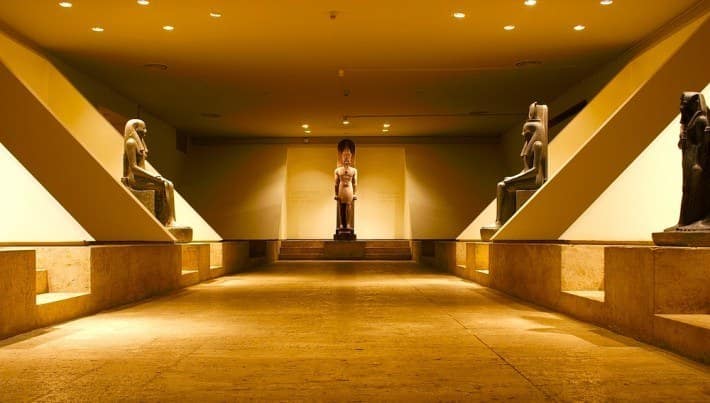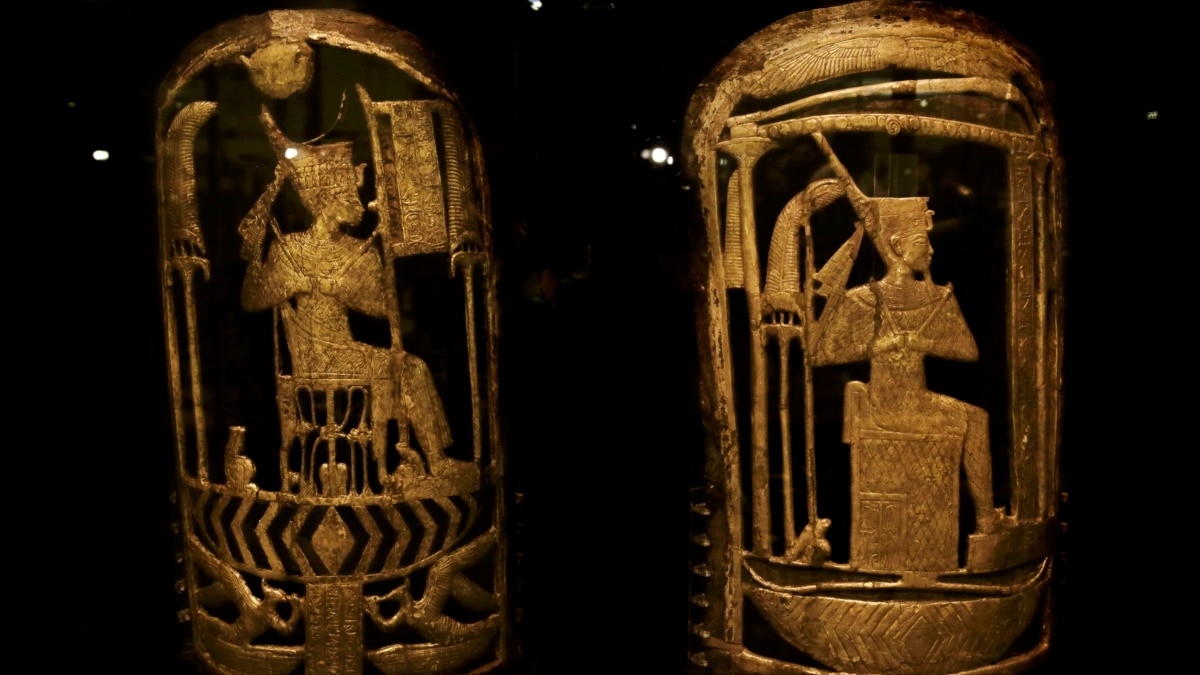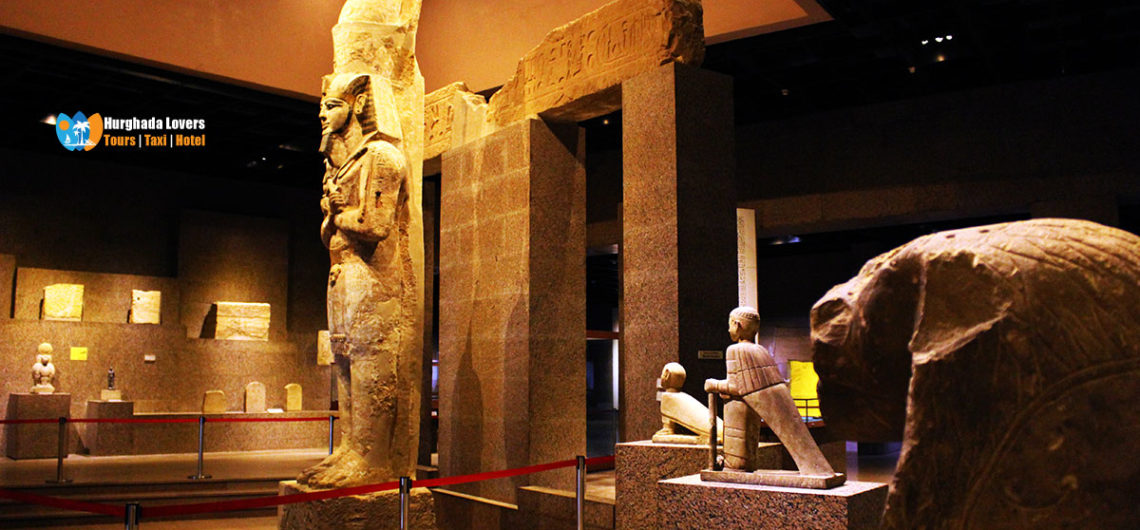The Luxor Museum: A Treasure Trove of Ancient Egyptian Artifacts
Welcome to a journey back in time to the ancient world of Egypt. Nestled in the heart of Luxor lies a hidden gem, the Luxor Museum. This two-story treasure trove houses a remarkable collection of ancient Egyptian artefacts. From grave goods of pharaohs to stunning statues unearthed from the Luxor Temple cache, the Luxor Museum offers an unparalleled glimpse into this fascinating civilisation's rich history and artistry.
Join us as we explore the wonders that await within the walls of this extraordinary museum.
Introduction to the Luxor Museum
Historical background and significance of the Luxor Museum
The Luxor Museum, located in Luxor, is a remarkable treasure trove of ancient Egyptian artefacts. It was established in 1975 and has since become one of the most important museums in Egypt. Its location on the east bank of the Nile, near the famous Karnak and Luxor temples, adds to its historical significance.
The museum was founded to preserve and showcase the archaeological treasures of the Luxor region. It houses a rich collection of artefacts dating back to the ancient Egyptian civilization, including statues, jewellery, pottery, and reliefs.
One of the highlights of the Luxor Museum is its collection of artefacts from the tomb of King Tutankhamun. This includes exquisite golden funerary masks, jewellery, and the iconic gilded wooden statue of Tutankhamun on a leopard.
The museum also has a dedicated Royal Mummies Room, where visitors can see the mummified remains of several ancient Egyptian pharaohs and other royal family members.
The Luxor Museum is a repository of ancient treasures and a centre for archaeological research and conservation. It plays a significant role in promoting Egyptian history and heritage tourism by preserving and showcasing the rich cultural heritage of the Luxor region.
Here's a quick summary of the Luxor Museum's historical background and significance:
- Founded in 1975 to preserve Luxor's archaeological treasures
- Located on the east bank of the Nile, near Karnak and Luxor temples
- Showcases a rich collection of ancient Egyptian artefacts
- Highlights include artefacts from King Tutankhamun's tomb
- Houses a Royal Mummies Room with mummified remains of pharaohs
- Plays a crucial role in promoting Egyptian history and heritage tourism

Collections and Highlights
Key artefacts and exhibitions in the Luxor Museum
The Luxor Museum is home to a remarkable collection of ancient Egyptian artefacts that offers visitors a unique glimpse into Egypt's rich history and culture. Some of the key artefacts and exhibitions in the museum include:
-
The Statue of Thutmose III: This colossal statue is one of the highlights of the Luxor Museum. It depicts the 18th dynasty pharaoh Thutmose III in a dignified pose, showcasing the artistic mastery of the ancient Egyptians.
-
The Tanis Treasure: Discovered in the 1930s, the Tanis Treasure is a collection of gold jewellery and precious artefacts from the royal tombs of Tanis. It includes intricately crafted necklaces, bracelets, and amulets that showcase the skill and craftsmanship of ancient Egyptian jewellers.
-
The Neb-Amun Tomb Chapel: This reconstructed tomb chapel belongs to an ancient Egyptian official named Neb-Amun. It displays beautifully painted scenes depicting religious rituals, offering valuable insights into ancient Egyptians' religious beliefs and practices.
-
The Akhenaten Room: Dedicated to the reign of Pharaoh Akhenaten, this room displays a collection of statues and reliefs depicting the controversial ruler and his family. It provides a unique perspective on the religious and artistic revolution during the Amarna period.
-
The Karnak Sphinxes: The Luxor Museum is also home to a collection of sphinxes that once lined the processional avenue from Karnak Temple to Luxor Temple. These beautifully preserved sphinxes offer a glimpse into the grandeur of ancient Egyptian architecture and symbolism.
Exploring these key artefacts and exhibitions in the Luxor Museum allows visitors to immerse themselves in the captivating world of ancient Egypt and appreciate this ancient civilisation's incredible artistry and craftsmanship.

Tutankhamun's Treasures
The exquisite artefacts from Tutankhamun's tomb displayed in the museum
The Luxor Museum houses an impressive collection of artefacts from various periods of ancient Egyptian history, including a selection of exquisite artefacts from the tomb of Tutankhamun. These artefacts glimpse the young pharaoh's opulent and richly adorned burial chambers.
Some of the notable treasures displayed in the museum include Tutankhamun's golden death mask, which is one of the most iconic symbols of ancient Egypt. The mask, crafted with incredible attention to detail, showcases the skill and craftsmanship of the artisans of that time.
Other artefacts from Tutankhamun's tomb include jewellery, furniture, chariots, and statues. Visitors can marvel at the intricate designs and beautiful craftsmanship that went into creating these objects. The artefacts provide invaluable insights into ancient Egyptians' life, religious beliefs, and cultural practices.
Here are a few highlights from Tutankhamun's treasures at the Luxor Museum:
- Golden funerary mask
- Jewellery, such as necklaces, bracelets, and rings
- Furnishings, including chairs and beds
- Statues of gods and goddesses
- Coffins and sarcophagi
Visitors to the Luxor Museum can take a step back in time and immerse themselves in the world of Tutankhamun and the grandeur of ancient Egypt. It is a truly unforgettable experience to witness these remarkable artefacts up close and gain a deeper appreciation for the rich history and heritage of this ancient civilization.

The Royal Mummies Room
Insights into the collection of royal mummies at the Luxor Museum
Inside the Luxor Museum, visitors can gain fascinating insights into Egypt's rich history through its collection of royal mummies. The museum houses a captivating display of mummified remains, offering a glimpse into ancient Egyptians' belief in the afterlife and their intricate burial practices.
Many of the mummies on display at the Luxor Museum belong to pharaohs and royal family members, including the famous Ramses I and his descendants. The collection showcases the remarkable preservation techniques used by the ancient Egyptians, allowing visitors to witness the extraordinary details of the mummies, such as intricate facial features and well-preserved textiles and jewellery.
In addition to the actual mummies, the museum presents a wealth of information about the rituals and customs associated with ancient Egyptian burial practices. Interpretive displays and accompanying texts shed light on the rituals and beliefs surrounding death and the afterlife, providing visitors with a deeper understanding of this significant aspect of ancient Egyptian culture.
Visitors to the Luxor Museum can truly appreciate the historical and cultural significance of the royal mummies, as they offer a tangible connection to the past and a mesmerizing glimpse into the world of the pharaohs. These carefully preserved remains serve as a reminder of the ancient Egyptian civilization's achievements and the enduring legacy they left behind.
Here's a quick summary of the insights visitors can gain from the collection of royal mummies at the Luxor Museum:
- Exquisite details of the mummies: Witness the intricate facial features, textiles, and jewellery.
- Rituals and customs: Learn about the burial practices and ancient Egyptian beliefs surrounding death and the afterlife.
- Historical significance: Gain a deeper understanding of the achievements and legacy of the ancient Egyptian civilization.
Temples and Monuments
Display of temple artefacts and monuments at the museum
At the Luxor Museum, visitors can explore a remarkable display of temple artefacts and monuments that offer a glimpse into the rich history of ancient Egypt. The museum showcases a wide range of architectural elements, statues, reliefs, and inscriptions from various temples in the Luxor area.
One of the notable highlights is the colossal granite statue of Amenhotep III, which originally stood at the entrance of the Funerary Temple of the pharaoh. The statue's grandeur and intricate details are truly awe-inspiring.
Another remarkable artefact is the granite shrine of the goddess Mut, which was once part of the Precinct of Mut at Karnak Temple. The intricate carvings on the shrine depict scenes of religious rituals and offerings.
Visitors will also come across fragments from the Colossi of Memnon, two massive stone statues that once guarded the entrance to Pharaoh Amenhotep III's mortuary temple. These well-preserved fragments give insight into the imposing size and majesty of the complete statues.
Here's a quick overview of the temple artefacts and monuments on display at the Luxor Museum:
| Artefacts | Highlights |
|---|---|
| Colossal statues | - Statue of Amenhotep III |
| - Fragments from the Colossi of Memnon | |
| Shrine and Reliefs | - Granite shrine of the goddess Mut |
| - Intricate carvings depicting religious rituals | |
| Inscriptions | - Ancient hieroglyphic inscriptions from various temples |
| Architectural Elements | - Wall fragments and columns from temple structures |
| - Intricate details and craftsmanship from ancient Egypt |
A visit to the Luxor Museum offers an incredible opportunity to appreciate the grandeur and significance of these temple artefacts and monuments that played a vital role in ancient Egyptian culture and religious practices.

Architectural Features
Exploring the architectural design and structure of the Luxor Museum
The Luxor Museum is home to a remarkable collection of ancient Egyptian artefacts and an architectural masterpiece in its own right. Designed by architect Mansour Ghoneim, the museum seamlessly blends modernity with the ancient surroundings of Luxor.
One of the most striking features of the museum is its open-air courtyard, surrounded by a wall adorned with intricate hieroglyphic inscriptions. This courtyard serves as a tranquil space where visitors can take a moment to appreciate the exhibits' beauty and the site's historical significance.
The museum's interior is equally impressive, with spacious galleries seamlessly flowing from one exhibit to another. Large windows allow natural light to flood in, illuminating the artefacts and enhancing the visitor experience. The design also incorporates elements of traditional Egyptian architecture, such as columned halls and stone walls.
The Luxor Museum's architectural features create a visually stunning environment and play a vital role in preserving the artefacts. The museum's climate-controlled environment helps maintain the optimum conditions for preserving delicate ancient objects.
Visitors to the Luxor Museum can truly appreciate the thought and care that went into its architectural design, which complements the ancient artefacts on display and creates an immersive experience. The museum's architecture is a testament to the rich cultural heritage of Egypt and its enduring legacy in the modern world.

Conservation and Preservation Efforts
Efforts made to preserve and protect the museum's artefacts
Preserving and protecting the Luxor Museum's artefacts is paramount to ensure their longevity and cultural significance. The museum follows rigorous conservation and preservation practices to safeguard these ancient treasures.
Efforts include:
- Conservation Laboratories: The Luxor Museum has well-equipped conservation laboratories staffed by trained professionals who employ innovative techniques to restore and maintain the artefacts.
- Climate Control Systems: The museum maintains a controlled environment with optimal temperature and humidity levels to prevent deterioration caused by fluctuations in these conditions.
- Display Methods: Artifacts use state-of-the-art showcases that protect from dust, light, and other potentially damaging factors.
- Security Measures: The museum employs strict security protocols, including surveillance systems, alarms, and trained personnel, to prevent theft or damage to the artefacts.
- Documentation and Research: Comprehensive documentation and research efforts help monitor the condition of the artefacts and inform conservation strategies.
- Educational Programs: The Luxor Museum organizes educational programs and workshops to raise awareness about the importance of artefact preservation and to train future conservators.
By implementing these measures, the Luxor Museum ensures that visitors can appreciate and learn from these invaluable artefacts for generations to come.

Visitor Information
Useful information for visitors, including ticket prices and opening hours
When planning a visit to the Luxor Museum, having all the essential information is important to make your experience smooth and enjoyable. Here are some useful details for visitors:
Ticket Prices:
- General Admission: EGP 120
- Students and Egyptian Citizens: EGP 60 (with valid ID)
- Children under six years old: Free
Opening Hours:
- Sunday to Thursday: 9:00 AM to 4:00 PM
- Friday and Saturday: 9:00 AM to 5:00 PM
It is advisable to check the museum's website or contact them directly for any updates or changes in operating hours, especially during holidays or special events.
Other important things to consider:
Tour Guides: Hiring a knowledgeable tour guide can greatly enhance your understanding and appreciation of the artefacts and history showcased in the museum.
Photography: Photography is allowed inside the museum, but flash photography and the use of tripods are prohibited. Be sure to respect the museum's rules and the artwork on display.
Accessibility: The Luxor Museum is wheelchair accessible, with ramps and elevators for easy navigation.
Location: The Luxor Museum is situated on the east bank of the Nile River, near Luxor Temple and Karnak Temple Complex.
Remember to arrive early to avoid crowds and allow yourself ample time to explore the museum's fascinating exhibits. Enjoy your visit to the Luxor Museum and immerse yourself in the rich history of ancient Egypt!

Tips for a Memorable Visit
Recommendations and tips for exploring the Luxor Museum
When visiting the Luxor Museum, making the most of your experience is important. Here are some tips and recommendations to help you explore the museum:
-
Plan your visit: Check the museum's opening hours and plan your visit accordingly. Arriving early in the day can help you avoid crowds and have a more peaceful experience.
-
Take a guided tour: Consider taking a guided tour to enhance your understanding of the artefacts and their historical significance. Guides can provide valuable insights and answer any questions you may have.
-
Don't miss the highlights: See the key artefacts and exhibitions, such as the treasures from Tutankhamun's tomb and the Royal Mummies Room. These collections offer a fascinating glimpse into ancient Egyptian history.
-
Take your time: The Luxor Museum has a vast collection, so don't rush through it. Take your time to appreciate the intricate details of the artefacts and absorb the rich history they represent.
-
Photography is allowed in most museum areas, but remember to be respectful and not use flash, as it can damage the artefacts. Take advantage of the opportunity to capture memorable moments and create lasting memories.
-
Check for special exhibitions: The Luxor Museum occasionally hosts temporary exhibitions, so be sure to inquire about any special displays that might be happening during your visit.
-
Visit the gift shop: Before leaving, stop by the museum's gift shop to browse a selection of Egyptian souvenirs, books, and replicas of the artefacts on display. It's a great opportunity to take a piece of ancient Egypt home.
By following these tips, you'll have a memorable and enriching experience exploring the Luxor Museum and its remarkable collection of ancient Egyptian artefacts.
